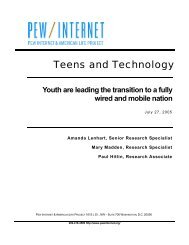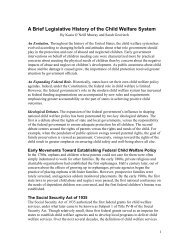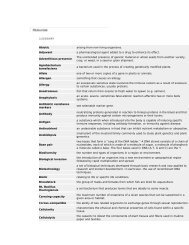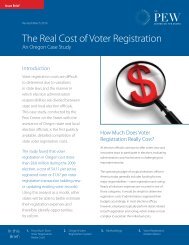After Heparin: - The Pew Charitable Trusts
After Heparin: - The Pew Charitable Trusts
After Heparin: - The Pew Charitable Trusts
Create successful ePaper yourself
Turn your PDF publications into a flip-book with our unique Google optimized e-Paper software.
Executive Summary<br />
and 15, 2011, in Washington, D.C. Conference participants included leadership from the FDA, the United<br />
States Pharmacopeial Convention (USP), major pharmaceutical manufacturing and distribution trade<br />
associations, pharmacy organizations and medical professional groups, individual supply chain experts<br />
and consumer organizations. This paper has now been revised to incorporate outcomes and stakeholder<br />
discussion from that meeting.<br />
This report concludes that more can—and must—be done to ensure the safety of “upstream” pharmaceutical<br />
manufacturing (chapter 1), to provide the FDA with essential authorities and resources to<br />
exercise effective oversight (chapter 2) and to improve the security of “downstream” pharmaceutical<br />
distribution (chapter 3).<br />
In a world where drug manufacturing is increasingly outsourced and offshored, robust supply chain<br />
management is critical. Pharmaceutical companies have the ultimate responsibility for drug quality and<br />
safety, but some companies may not be adequately verifying the quality of their suppliers. 11,12 Ensuring<br />
drug-ingredient manufacturers meet quality standards is critical to ensuring the quality of the product<br />
itself. However, chapter 1 reviews numerous situations in which foreign producers and traders have<br />
misrepresented the source drug ingredients from the United States and other purchasers, in some cases<br />
concealing substandard products that harmed consumers. It is essential that manufacturers look beyond<br />
current manufacturing quality standards (known as good manufacturing practices, or GMPs) in their<br />
own facilities to ensure appropriate supplier qualification, through risk-based assessments, quality agreements<br />
and physical audits, where appropriate.<br />
<strong>The</strong> FDA and its counterpart agencies worldwide monitor the quality and safety of drug manufacturing<br />
by inspecting plants and validating compliance with GMPs. However, the FDA lacks the resources,<br />
capacity and authority to effectively inspect foreign facilities and assess risk. In contrast with U.S. manufacturing<br />
facilities, which are inspected every two to three years, the FDA currently inspects foreign<br />
facilities once every nine years on average. 13 Improved oversight of foreign manufacturing is essential<br />
and will require increased resources for the FDA, some of which could be obtained through industry<br />
fees. In addition, the agency will have to make additional use of third-party inspections, including those<br />
by other regulators and, potentially, private entities. <strong>The</strong> FDA also requires certain new authorities to enable<br />
effective oversight and must more effectively use its existing authorities and resources. <strong>The</strong> agency<br />
should have the power to mandate recalls, subpoena witnesses and documents and destroy at the border<br />
any products that present public safety risks. In the long term, ameliorating risks to the U.S. and global<br />
drug supply requires international cooperation, harmonization of standards and steps to improve the<br />
capacity of regulatory bodies in the developing countries where manufacturing increasingly takes place.<br />
<strong>The</strong> movement of finished drugs from manufacturer to the consumer is also a complex process involving<br />
many intermediate players. <strong>The</strong> past decade has seen several instances of adulterated and counterfeit<br />
drugs infiltrating U.S. distribution. In 2002, counterfeit vials of the anemia drug Epogen ® entered the<br />
distribution supply chain through licensed wholesalers and were sold by U.S. pharmacies. 14–16 A shipment<br />
of 129,000 vials of insulin, stolen in June 2009, was stored under unknown conditions before<br />
8<br />
<strong>Pew</strong> Health Group
















